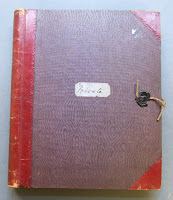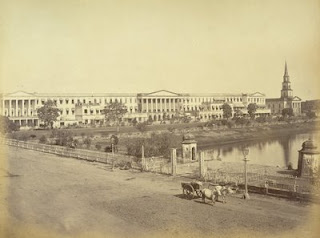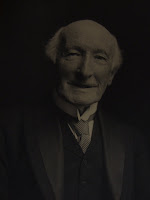The Diary of Dr James Little – Medicine, Shipwreck and the Indian Mutiny
 |
| TPCK/6/5/10 - Diary of James Little |
This month's item of the month is the diary of Dr James Little. It is part of a small collection of the personal papers of various Irish doctors collected by Dr Kirkpatrick, and donated by Kirkpatrick to the College. Unlike many of the items in the archive it gives an insight into the private life of a doctor rather than the public view expressed through their case books and medical papers.
James Little was born in Newry in January 1837, his diary starts with a summary and retrospective of his childhood and adolescence including a description of his decision to enter medicine;
'1853 – for some years past my attention has been directed to the medical profession – I now quietly sat down and made up my mind to go to it – a family council was held & the best bargain made for me to go to Dr Cohan as an apprentice – so I went over to Armagh and was installed as his apprentice - I should certainly not have had the courage to do so were it but that it had already been agreed that he was to allow me to go to Dublin in the following November and I hope that Aunt's kindness will make the nine months bearable'.
In Dublin James Little enrolled as a student of the Royal College of Surgeons in Ireland, becoming a Licentiate of the College in 1856. On March 20th 1857 Little left Southampton on the 'Vera', bound for Calcutta where he had accepted a post as Surgeon to the Peninsular and Oriental Steam Packet Company, a post he would retain for 3 years. Dr Little's three years service with the P&O Company are the main focus of the diary. In his diary Dr Little records his experience as a ship surgeon and also the long periods of unemployment where he lived at the officers club in Calcutta.
 |
| Calcutta, c.1860s |
In February 1858, on one of his early voyages as ship's surgeon, Dr Little's ship the 'Ava' was shipwrecked on rocks 12 miles from the cost of Ceylon. In his diary, written in retrospect some month later, he describes in detail the experience. The ship having become stranded on the rocks the passengers were evacuated onto life rafts in case the ship should break up in the night, where Dr Little and his charges spent a cold and sleepless night. Before the evacuation Dr Little has risked venturing below decks to rescue his doctors bag and diploma case, the essential tools of his trade! In the morning the rafts were able to make the short journey to the shore, and all the passengers were safely landed.
 |
| P&O ship similar to the Ava |
Little and some of the ship's crew spent the next few weeks living in a tent on the beach where they had landed, while the crew attempted to rescue all they could from the wreck of the Ava, which had split in half and was slowly sinking. When she was ship wrecked the Ava was sailing from Calcutta to Suez with the post, refugees from the Indian Mutiny including Julia Inglis (the wife of Colonel Inglis who commanded the British troops during the Siege of Lucknow) and a large quantity of treasure. Although no lives were lost, some of the treasure and the diaries of Colonel Inglis were never recovered. Lady Inglis later published The Siege of Lucknow- A Diary (1892) which ends with the story of the shipwreck of the Ava.
 |
| TPCK/6/5/10 - Diary of James Little |
 |
| VM/1/2/L/16 - James Little |
Following his adventures in India Little returned to Ireland, took his MD from Edinburgh University in 1861 and two years latter set up in practice in Dublin. Little went on to become one of the leaders of his profession, he lectured at the Ledwich School of Medicine and the Royal College of Surgeons in Ireland, in 1898 he was appointed Regis Professor of Physic in the University of Dublin, and was an active member of numerous medical clubs and organisations. He was registrar of the Royal College of Physicians in Ireland, and President of the same College from 1886-1888. Little died in December 1916 at the age of 79, six years latter a bronze plaque with a portrait in bas-relief was erected in the entrance Hall of the College by the Members and Fellows.